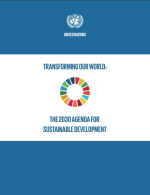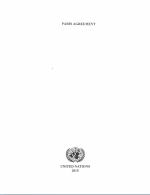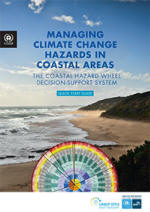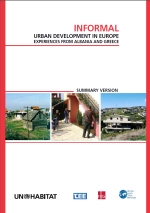UN Publications

|
List of United Nations Publications
 |
This special issue shows the progress of achieving the
SDG's to date and presens a candid assessment of the SDGs based
on the latest data and estimates. While highlighting the
existing gaps and urging the world to redouble its efforts, the
report also emphasizes the immense potential for success through
strong political will and the utilization of available
technologies, resources, and knowledge. Together, the global
community can reignite progress towards achieving the SDGs and
create a brighter future for all.
|
 |
This Agenda is a plan of action for people, planet and
prosperity. It also seeks to strengthen universal peace in
larger freedom, We recognize that eradicating poverty in all its
forms and dimensions, including extreme poverty, is the greatest
global challenge and an indispensable requirement for
sustainable development.
|
 |
The Paris Agreement is a legally binding international treaty
on climate change. It was adopted by 196 Parties at COP 21 in
Paris, on 12 December 2015 and entered into force on 4 November
2016. Its goal is to limit global warming to well below
2, preferably to 1.5 degrees Celsius, compared to pre-industrial
levels. To achieve this long-term temperature goal, countries
aim to reach global peaking of greenhouse gas emissions as soon
as possible to achieve a climate neutral world by mid-century.
The Paris Agreement is a landmark in the multilateral climate
change process because, for the first time, a binding
agreement brings all nations into a common cause to
undertake ambitious efforts to combat climate change and adapt
to its effects.
Read the Paris
Agreement here
|
 |
The Coastal Hazard Wheel is published by the UNEP-DHI
partnership and is developed to support coastal decision-making
at all management levels and address the challenge of coastal
climate change adaptation. It is based on a universal coastal
classification system and functions as a key for classifying a
particular coastal location, determining its hazard profile,
identifying relevant management options and communicating
coastal information. The Coastal Hazard Wheel App provides
global coastal classification data in low-moderate quality and
high quality national classifications will become gradually
available as various classification projects are implemented.
http://www.coastalhazardwheel.org/
|
|
 |
Informal development is not a novel issue for Europe. The
southern part of the region has long experience in dealing with
this problem. Rapid economic and political change in the
European region during the last twenty years has resulted in
rapid population increase in many urban centers, mainly due to
immigration of rural poor searching for job opportunities and
better living conditions, or of internally displaced people.
Increasing unplanned or informal suburban development has become
an issue of major importance particularly in the transition
countries.
Read publication
|
|
 |
The General Assembly, Proclaims this Universal Declaration of
Human Rights as a common standard of achievement for all peoples
and all nations, to the end that every individual and every
organ of society, keeping this Declaration constantly in mind,
shall strive by teaching and education to promote respect for
these rights and freedoms and by progressive measures, national
and international, to secure their universal and effective
recognition and observance, both among the peoples of Member
States themselves and among the peoples of territories under
their jurisdiction.
Download
the declaration here
|





























